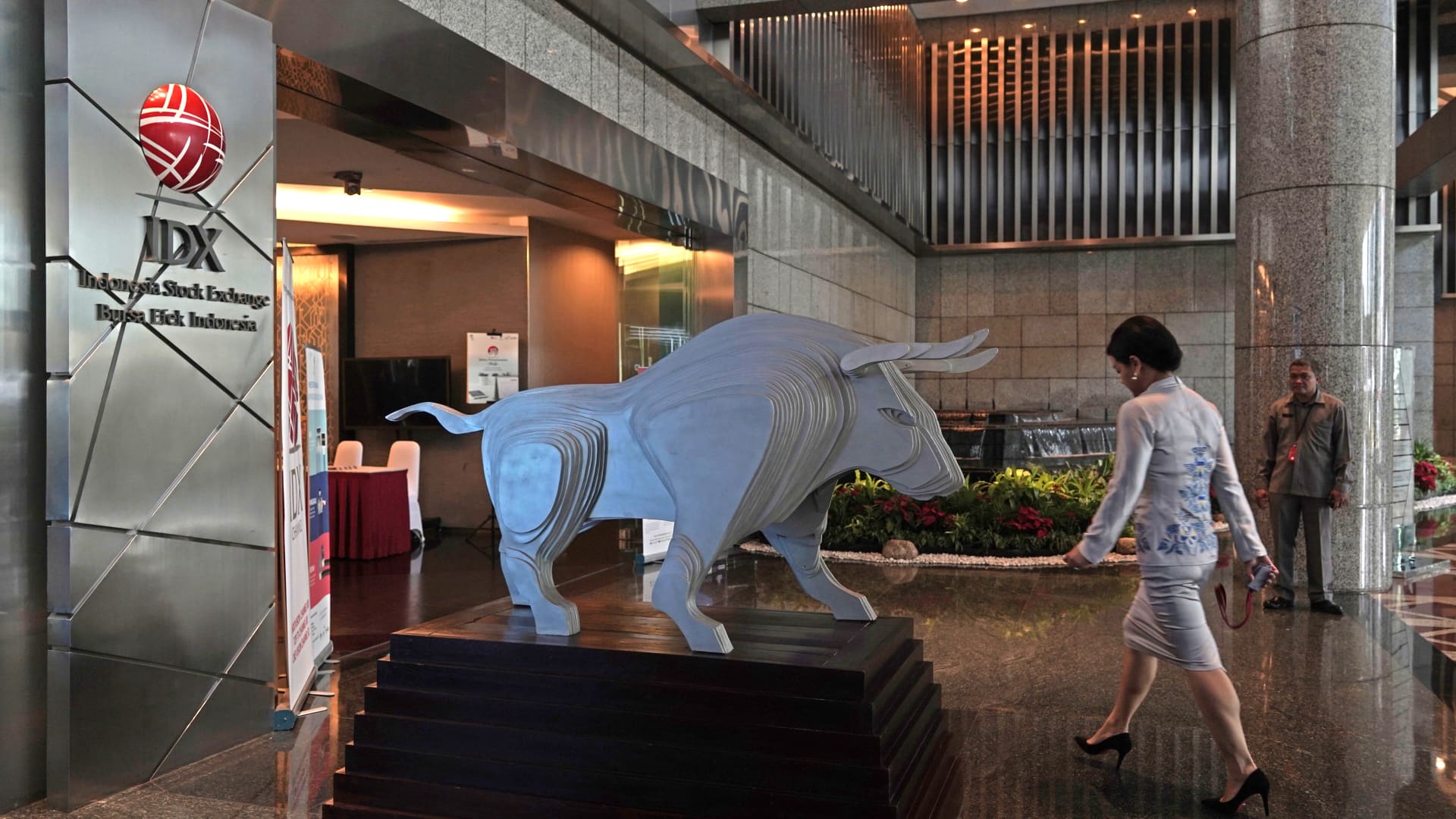
Geopolitical tensions around the world have been on the rise, but Southeast Asia’s markets may offer relative safety to investors, according to top investment banks.
As we enter the next quarter of 2022, CNBC asked analysts from Goldman Sachs and JPMorgan Asset Management which Southeast Asian markets were their top picks.
Southeast Asian stocks have underperformed and been “largely ignored by global investors for a decade,” said Timothy Moe, Goldman’s chief Asia Pacific equity strategist.
Indonesia is a top Southeast Asian pick for both Wall Street banks.
Indonesia: Banking and commodity plays
“In Indonesia, we are structurally positive on the banks as the majority of the population are still unbanked or underbanked. We are currently positioned in the leading private sector and also state-owned banks as they have been proactively driving digital adoption to accelerate financial penetration,” said Desmond Loh, a portfolio manager at JPMorgan Asset Management.
Strong commodity prices have also been beneficial for export earnings in Indonesia as well as the country’s trade balance, and that’s set to support the Indonesian rupiah as well as the nearer term growth outlook in Indonesia, he said.
Global commodity prices have been on a rollercoaster ride since the war in Ukraine broke out after Russia’s invasion in late February. Russia is a major oil producer while Ukraine is a major exporter of other commodities such as wheat and corn.
As of Monday morning in Asia, international benchmark Brent crude futures have risen more than 30% so far this year.
Vietnam and Singapore
JPMorgan Asset Management also likes Vietnam, which Loh termed a “star performer in the past few years” in economic resiliency and growth. Vietnam is one of the few economies globally to have seen positive economic growth throughout the pandemic, he added.
“To capitalize on the growth, we are positioned in high quality consumer proxies and banks,” he said, without naming specific stocks.
Meanwhile, Singapore is the other Southeast Asian that Goldman Sachs likes.
There are three main reasons why the investment bank likes Indonesia as well as Singapore, said Moe.
- Improving economic and growth momentum from a region recovering belatedly from Covid-related setbacks.
- A banking sector that is heavily weighted in stock indexes and set to benefit from a switch to tighter monetary policy and rising interest rates.
- The “gradual emergence” of digital economy firms which are being included in Indonesia and Singapore indexes.
Indonesia’s Jakarta Composite has risen more than 7% this year, while Vietnam’s VN index is up about 1% in the same period. Singapore’s Straits Times index has gained more than 9%.
In comparison, MSCI’s broadest index of Asia-Pacific shares outside Japan has dropped 6%.
On Wall Street, the S&P 500 is down 4.6% so far this year, while the pan-European Stoxx 600 has dropped about 6%.
Investors have in recent weeks been grappling with a range of concerns, from the commodity price spike triggered by Russia’s invasion of Ukraine to a rising interest rate environment as major central banks like the U.S. Federal Reserve seek to fight inflation.
Shelter from geopolitical tensions
Southeast Asia is “relatively insulated” from rising geopolitical tensions in Europe, as Russia and Ukraine account for less than 1% of regional exports, according to Loh.
“Escalation in geopolitical risks renders near-term tailwind for commodity prices to underpin the strength of ASEAN’s commodity-exporter markets,” he said, referring to the 10-member states of the Association of Southeast Asian Nations.
No ‘exodus of outflows’ expected
Global investors have been repositioning in the last few weeks in anticipation of more aggressive moves ahead by the Federal Reserve’s monetary tightening, but the analysts expect the impact on Southeast Asia to be relatively smaller compared to before.
In March, the Federal Reserve raised interest rates for the first time since 2018, and Fed Chair Jerome Powell subsequently pledged to take tough action on inflation that is “much too high.”
The prospect of more rate hikes ahead by the Fed has raised concerns of capital outflows and currency depreciation in Southeast Asia’s emerging markets, a phenomenon seen in 2013 during the “taper tantrum” that saw bond yields spike after the Fed hinted asset purchases could wind down.
“We don’t expect an exodus of outflows [from ASEAN] as we saw in the last taper tantrum,” Loh said, explaining that country level balance sheets in Southeast Asia are “generally much healthier” now compared to a decade ago.
Most of Southeast Asia’s central banks, with the exception of Singapore, have yet to tighten monetary policy. That’s in part due to an inflation situation regionally that is relatively less severe compared with developed economies in the West.
Southeast Asian economies today are also more resilient compared to past cycles, according to Moe, who cited external balances that are in better shape as well as currencies that are attractively valued.




